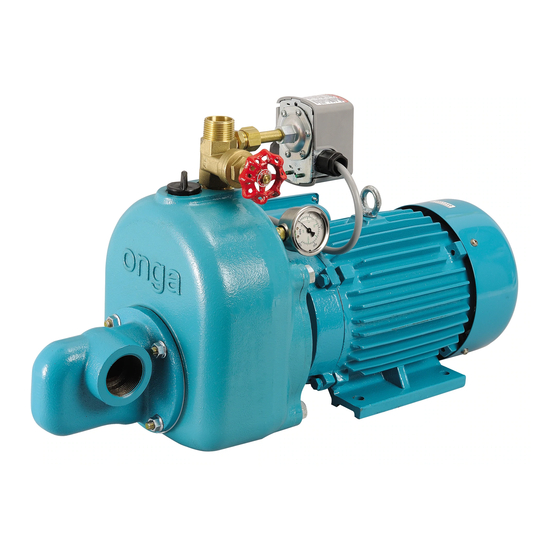
Advertisement
FARMMASTER
JJ & OJ Series
Farm Pumps for Stock Watering,
Irrigation & Water transfer
Should the installer or owner be unfamiliar with the
correct installation or operation of this type o f
equipment, contact the distributor or manufacturer
for correct advice before proceeding with installation
or operation of the product
Distributed in NZ By:
Freephone 0508 634 341
7 Monier Pl, Mt Wellington, Auckland
1060, New Zealand
1
Advertisement
Table of Contents

Summarization of Contents
Installation
Preparation for Operation
Inspect pump for shipping damage. Ensure suction piping is free of air leaks and has no rises for airlocks.
Pump Protection
Ensure pump is operated according to manual. House in weather-proof, well-ventilated enclosure to protect from elements.
Pump Mounting
Mount pump on solid, level, vibration-free surface. Locate close to water source for best performance.
Suction Piping Guidelines
Keep suction pipe short, use reinforced hose, ensure air-tight fittings, equal or larger diameter, submerged inlet, use footvalve/checkvalve.
Discharge Piping
Length and diameter affect flow. Pressure ratings must exceed pump max pressure. Use shut-off valve for isolation.
Pressure Switch Settings
Factory preset for low pressure. Adjust for high pressure injectors. Seek dealer advice if unsure.
Valve Recommendations
Use shut-off valves for maintenance. Closed loop/vertical lift systems need check valve or footvalve.
Electrical Connections
230V single phase plugs into 10A supply. 415V three phase needs contactor/overloads. Check rotation.
Piping Installation Details
Tighten threads to prevent leaks. Use correct pipe size, support pipes independently, slope suction pipe upwards.
Deep Well Piping
Use correct polythene grade, teflon tape on joints. Install injector pipes straight, use two hose clamps per fitting.
Teflon Taping Instructions
Use new/clean fittings. Wrap male threads 1-2 layers. Do not overtighten. Rewrap if leaks occur.
Fittings Considerations
Use fewest fittings for best efficiency. Avoid fittings that cause air traps. Do not connect to high pressure systems.
Electrical
Electrical Safety and Connections
Ground motor before connecting. Turn off power before working. RCDs recommended. Match supply voltage. Use correct power lead.
Operation
General Operation Precautions
Never run pump dry. Do not block suction. Motors run hot; avoid fire risk and burns. Supervise children near appliance.
Priming Pump - General
Flooded systems prime automatically. For non-flooded, remove plug, fill with water, replace plug. Priming time depends on lift/piping.
Shallow Well Priming Instructions
Fill pump and suction line. Loosely tighten plug for air bleed. Operate until primed, then tighten plug fully.
Deep Well Priming Instructions
Fill pump and lines with water. Turn pump on, open gate valve slowly to purge air. Maintain minimum operating pressure.
Pressure Tank Air Charge
Switch off power. Empty tank by opening taps. Check air charge with gauge. Inflate to 10% below cut-in pressure.
Maintenance & Service
Pump Maintenance & Service Precautions
Service by qualified personnel only. Use genuine parts. Switch off power, disconnect supply, close valves, release pressure.
General Maintenance
No lubrication needed beyond care. Empty for frost risk. Replace worn shaft seal by qualified agent.
Troubleshooting Guide
Troubleshooting: Pump Failure or Reduced Capacity
Check for suction leaks, clogged impeller, no power, blown fuse, cavitation, incorrect pipe size, motor issues, or closed valves.
Troubleshooting: Pump Running Too Slowly
Check for low voltage, loose connections, or high ambient temperature. Consult electrician for voltage issues.
Troubleshooting: Pump Leaking or No Water
Check casing bolts, O'ring, mechanical seal for leaks. Ensure power supply and gate valve are open for no water.
Troubleshooting: Pump Will Not Prime
Check for air lock, incorrect injector, water source drawdown, or low pressure switch setting. Consult professionals.
Troubleshooting: Rapid Cycling
Check pressure tank size, air charge, pressure switch setting, or pump injector combination. Consult professionals.












Need help?
Do you have a question about the ONGA FARMMASTER OJ800 and is the answer not in the manual?
Questions and answers